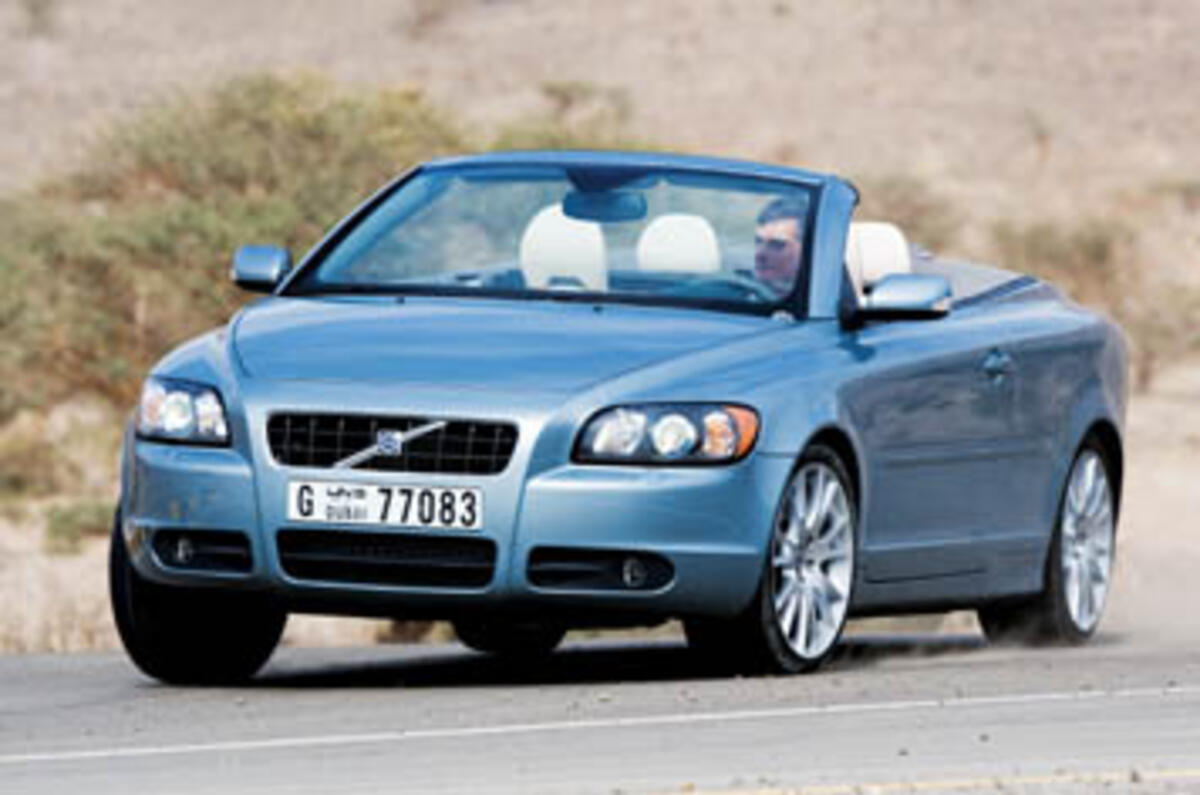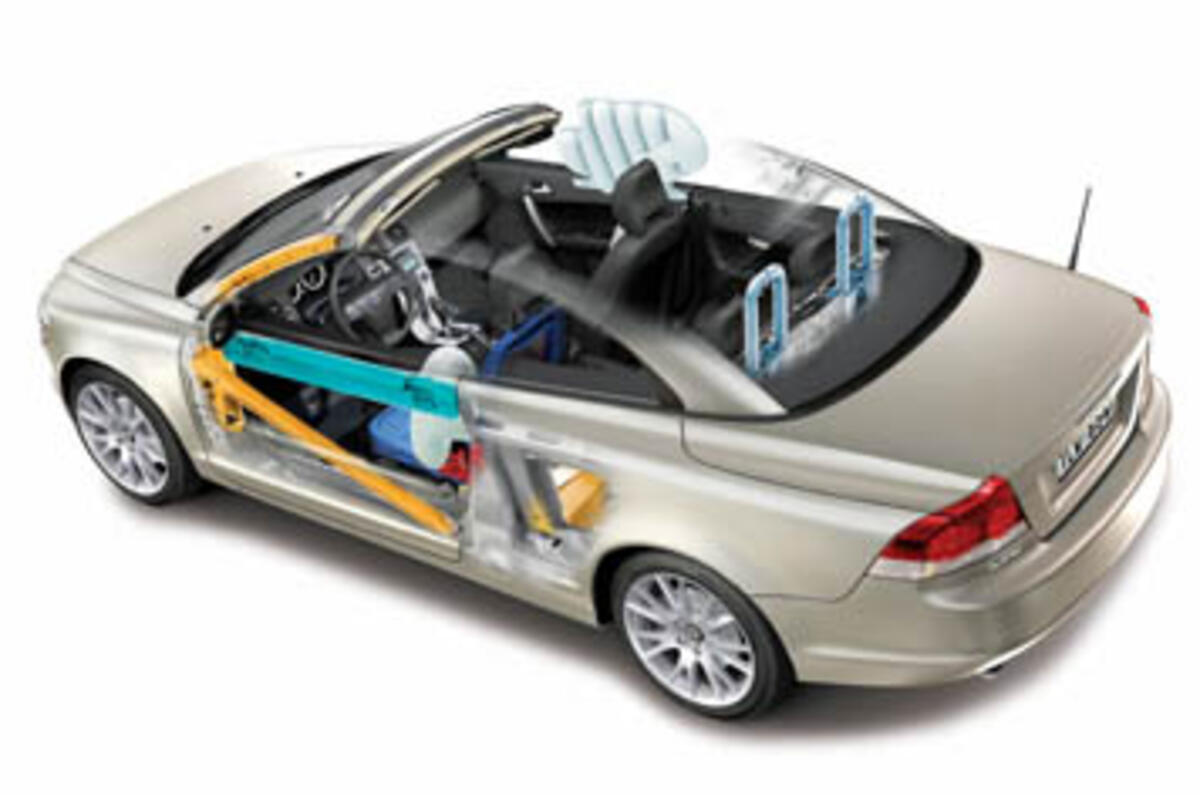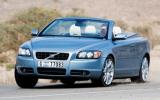What's new?There are three mildly spectacular things about the Volvo C70 T5 SE Lux. The first – and this comes with all versions of the C70 – is the roof. We have witnessed the elaborate ballet of coupé-cabriolets before, but the deliberate precision with which this Volvo’s trio of sections self-stack and bury themselves below deck is a pleasure to behold if you’re remotely moved by ingenious engineering.Secondly, the SE Lux’s Dynaudio stereo – you can have this as a £1750 option on lesser C70s – whose 12 speakers and seismic sub-woofers issue a crisp avalanche of sound without a hint of distortion, vibration or twitter. It’s not cheap, this Danish stereo, but it adds cheer to the driving experience.The third you must initiate by turning the DSTC off via the trip computer stalk. It’s probably something you’ll explore just the once, especially if you pay for your own tyres, but the smoke was spectacular. We piled the C70 into a tight bend, ESP and traction control turned off, felt it scrabble wide, unleashed the torque and were amazed by the clouds of fried rubber gusting from the inside front tyre, which almost had the Volvo enveloped. If you want a – frankly somewhat foolish – demonstration of how much torque the top-of-the-range T5 has, this is it. To be precise, 236lb ft of twist action comes thumping in at an impressive 1500rpm, and the C70’s front tyres struggle to contain it. Its similarly engined cousin the Focus ST deals with the onslaught rather better, but then the C70 isn’t primarily intended as a driver’s car.What's it like?It’s a roof-down cruiser, and a balmingly effective one at that. The torque helps, especially when it’s reined in by the ESP and traction control system, which - at least on dry roads - is not excessively interventionist. You can surf along on the torque - even in sixth if you’re feeling lazy - the blown five-cylinder’s easy authority complemented by a buttery gear shift and a compliant clutch. All of which made our brisk assault of a twisty, sand-sprayed road that spears out of Dubai a surprisingly restful experience.A balmy one too, with the Volvo’s aluminium roof Houndini’d away and its windows and wind-jammer up. That way you get buffeted less, and there is less aural competition for the stereo. It's the way this Volvo is best driven, not because it it is inept or incompetent – words that its floppy predecessor sailed dangerously close to – but because it is no high-precision driver’s tool: the steering is a bit too vague, the chassis’s responses slightly too wooden. Overdo it into a tight corner with the DSTC on and you’ll be bundled through the bend with admirable dispatch, but there’s little point in deliberately provoking such electronic tricks. And there’s a touch of torque-steer on smooth roads that could worsen on bumpy British ones.So the C70 is entertaining, but not an out-and-out driver’s delight. Instead it offers alternative appeals, not least an elegant interior. At first it appears sparsely trimmed, but study it and you appreciate the clean sweep of its fascia, the subtle deployment of aluminium décor and the floating console. You’ll also enjoy a body that is largely quiver-free: Volvo claims the same torsional stiffness as the S40 saloon, and twice that of the old C70. However, when travelling at speed the wind-noise suppression of the roof system was less than convincing on this early car.Other negatives – leaving aside question marks over the long-term reliability of such complicated roof systems – tend to be confined to rear quarters and a constricted boot. The Volvo’s rear seats do appear cramped, but once you’re in they turn out to be decidedly more tolerable than you’d expect. Boot space is halved to 200 litres when the roof is down – less than all the competition – but roof-up it’s the best of the bunch.Should I buy one?The C70 T5 is not a cheap car, though it’s competitively pitched against the cars Volvo sees as its main competitors: the BMW 3-series, Audi A4 and Saab 9-3 cabriolets. There are cheaper C70s – the range starts at £26,200 for the 168bhp 2.4 Sport, with SE and SE Lux versions available – but it’s worth remembering that the only slightly smaller VW Eos and Vauxhall Astra TwinTop, as well as the established Renault Mégane and Peugeot 307 CCs, might satisfy your needs for less money. Curiously, the new C70 appears to be closer in size to these cars and smaller than its predecessor, but the figures reveal otherwise. Perhaps it is the slightly short wheelbase, long overhangs and tapering snout that deceive.Next year there will be a 179bhp C70 D5 diesel, which might just be the shrewdest buy of the lot. But for now the two petrol C70s deserve to appear on the shortlist of anybody after a premium coupé-cabriolet, as Volvo labels it. It’s a better car than its compatriot Saab and the Audi, if not quite as entertaining as the BMW.
The new C70 isn't a back-roads stormer, but it's safe, rigid and better than the Audi A4 or Saab 9-3. Just watch that front tyre wear...
Close
Back to top




















Add your comment